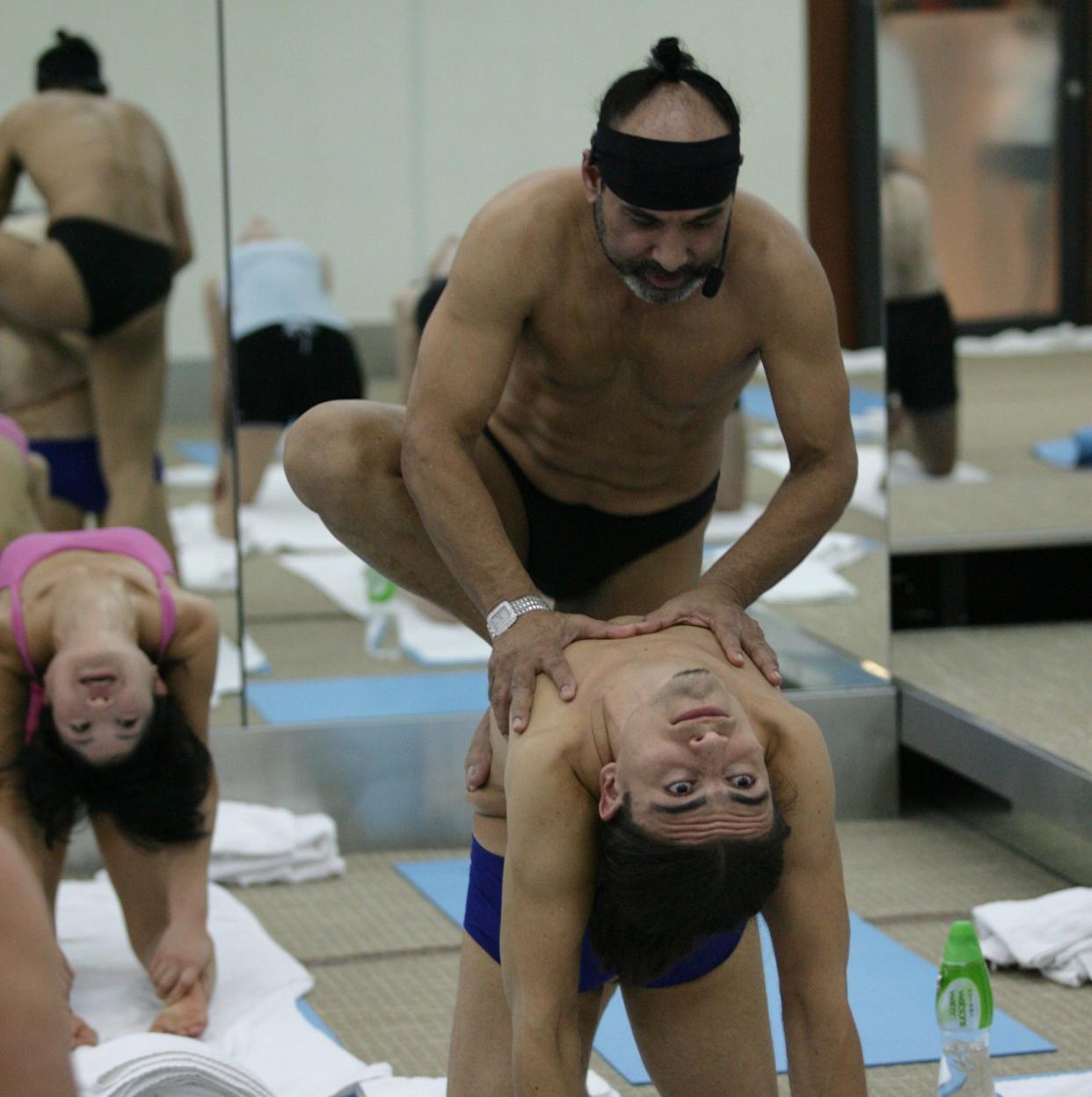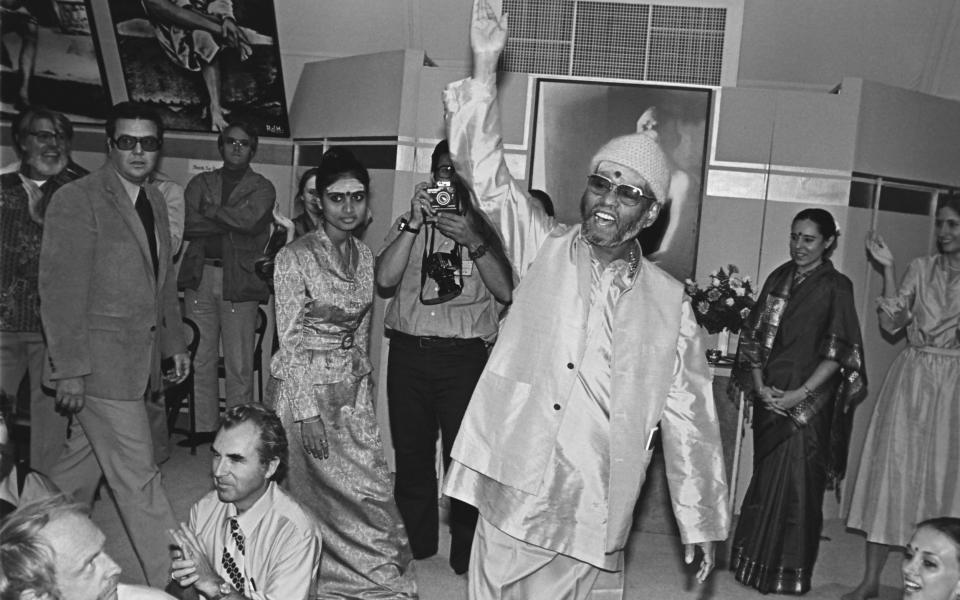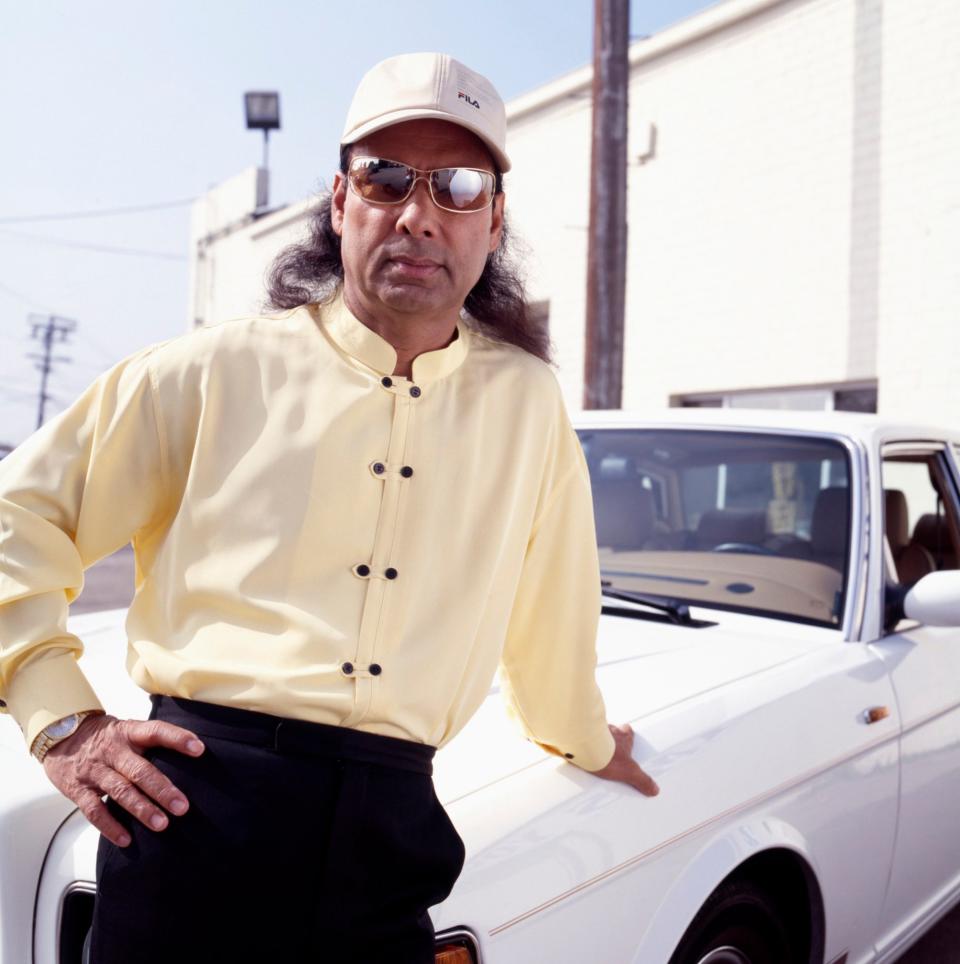‘So many yoga gurus try to have sex with female followers – I’m amazed women still fall for it’

- Oops!Something went wrong.Please try again later.
- Oops!Something went wrong.Please try again later.
- Oops!Something went wrong.Please try again later.
- Oops!Something went wrong.Please try again later.
According to the Katha Upanishad, a Vedic text believed to date from between 800BC and 300BC, yoga is a “complete stillness in which one enters the unitive state, never to become separate again”.
Over the centuries, in its migration to the West, what originated in India as a spiritual practice has, for most, transformed into something rather different – a combination of healthy exercise and self-punishment.
But the combination of the pursuit of the body beautiful, and the – often bogus – aura of spirituality around the practice has opened the door to something much more sinister.
This week Gregorian Bivolaru, a Romanian described as a “tantric yoga guru”, and the founder of an organisation called the Movement for Spiritual Integration into the Absolute (MISA), was arrested in France, on charges of rape, kidnapping and people trafficking, accused of running an international sex slave ring, and using “mental manipulation” to sexually abuse his female followers over a number of years.
A former pupil of Bivolaru, Agnes Arabela Marques, who claimed to have lost her virginity to him in 2016 when she was just 15, said that Bivolaru was obsessed with “the Indian myth that said you could get to a high spiritual level if you had sex with 1,000 virgin girls”.
Another female member of MISA was on record as saying “it was an honour to have sex with guru Gregorian, because it meant positive karma and spiritual progress”.
In the past, Bivolaru has denied accusations of criminal activity, with his organisation describing some of the past allegations as “fabricated facts”.

It’s a long way from the “complete stillness in which one enters the unitive state, never to become separate again”.
Yoga means “union”, a process of integrating the body, mind and spirit. If the classic image of the practice was once of the solitary contemplative devotee seated in the lotus position in his Himalayan redoubt, it is now of lithe, sunkissed bodies enacting the downward dog at expensive retreats in the Greek islands or on the polished wood floors of the yoga studio with its aroma of incense, its New Age music and its air of cultivated narcissism.
Yet originally yoga was a physical practice only insofar as it served a spiritual objective, as a means of self-transcendence.
The Buddha, realising enlightenment while meditating under the Bodhi tree, is the most potent symbol of this. The founder of one of the world’s great religions would be puzzled to reflect that yoga is now a £14 billion industry. And appalled that the spiritual teachings of Buddhism and yoga are deployed as the cover for sexual abuse.
The list of transgressors is endless. There is Swami Muktananda, the founder of Siddha Yoga, who arrived in the West in 1970, establishing ashrams and meditation centres in numerous countries.
Muktananda was known as “the shaktipat guru”, capable of transmitting spiritual energy and awakening his students simply through the power of his presence. It was only following his death in 1982 that allegations surfaced of him molesting under-age girls and engaging in sexual relations with young devotees.

Then there was Harbhajan Singh Puri, a Punjabi customs inspector who arrived in America with his wife and three children in 1968. Calling himself Yogi Bhajan, and telling people he was a renowned holy man in India, he began teaching Kundalini yoga.
Bhajan, who died in 2004, built up a thriving business, marketing Kundalini Yoga, and his own brand of Yogi Tea, ostensibly “rooted in ayurveda”, and which lived on after his death, reportedly exceeding sales of $59 million (£46 million) in 2022. As well as building a huge and adoring following he also cultivated political connections, and was photographed glad-handing with politicians including George Bush and Bill Clinton.
It was not until 25 years after his death that it emerged that Bhajan, contrary to his claims of strict celibacy, had actually raped three women and had sexual relationships with a number of other devotees, as well as being involved with several criminal operations including smuggling 20 tons of marijuana and weapons from Thailand and defrauding people with fake investment scams.
He explained to one devotee that in having sex with her he was “just fulfilling an obligation to you because of past karma. I have no need of any sexual relationship. I am beyond all of that.” He also told her that the only way to “clean” her karma was by “doing his laundry and washing his floors”.
Perhaps the most infamous teacher of all is the Speedo-wearing, waxed-chested Bikram Choudhury, the inventor of so-called “hot yoga”.
Consisting of a series of 26 postures practised in an environment heated to 104 degrees which caused practitioners to vomit or pass out, and which attracted a celebrity following including Shirley MacLaine, Lady Gaga and Gwyneth Paltrow, “hot yoga” made Choudhury a multi-millionaire.
He fell to earth in 2012, amidst a slew of lawsuits accusing him of rape, sexual harassment and discriminatory behaviour against gay people, women and racial minorities.
He fled to India, where he opened yoga studios, unchastened, responding to the accusations by saying “Why would I harass women? People spend one million dollars for a drop of my sperm,” and calling his accusers “trash” and “psychopaths”.
Denying the accusations, Choudhury said in 2014: “I never hurt another spirit. I’m the most spiritual man… you ever met in your life.”

Tibetan Buddhism too has had its own share of scandals.
In 2017 Sogyal Rinpoche, the founder of Rigpa, a prominent Buddhist organisation in the West, and the author of a best-selling book, The Tibetan Book of Living and Dying, was forced to resign in disgrace after allegations of sexual and physical abuse that that had circulated for years – and were reported extensively in The Telegraph in 1995 – came to the surface after devotees published an open letter accusing him of using his role as a teacher “to gain access to young women, and to coerce, intimidate and manipulate them into giving [him] sexual favours”.
Sogyal’s case might stand as a parable of the dangers that can arise when Westerners fall in thrall to esoteric spiritual teachings they may not fully understand, and when Eastern teachers are exposed to the glamour and temptations of celebrity worship.
As is common in so many communities, senior members in Rigpa conspired for years to cover up or turn a blind eye to the allegations, not least because to denounce Sogyal would cast a fatal blow to their own judgement.

The alleged abuse of his students was explained away as being in the tradition of ancient Vajrayana teachings, in which tantric sexual relations with a consort may be an intrinsic part of the path to enlightenment.
“That was certainly not the case with Sogyal,” says Mary Finnigan, an authority on Tibetan Buddhism, and the author, with Rob Hogendoorn, of Sex and Violence in Tibetan Buddhism: The Rise and Fall of Sogyal Rinpoche.
“In order to be able to engage in sexual union, the practitioner has to have reached a very high level of development through many, many years of yogic practice, and it’s restricted to highly evolved adepts. Sogyal was a total charlatan who was using that ploy in order to pull girls for his own satisfaction, taking advantage of their credulity.
“He was a powerful male who was running a big organisation and within that organisation women were considered to be very special if they were invited into his harem. This is all to do with the abuse of power.” Sogyal, who died in 2019, always denied the allegations, but an independent inquiry upheld many of the complaints.
In this respect, the allure of an exotic teaching, and the surrender to the teacher, is similar to the power exercised by the boss over the powerless employee or the seductive appeal of the celebrity to the fan. The key difference is that the boss or the celebrity is unlikely to be presenting themselves as the embodiment of spirituality or enlightenment, as the guru is.
“The teacher can appear to have some knowledge that the student wants, which gives him power over them,” Finnigan says. “This power can make them feel omniscient, when in truth they’re world class narcissists. So many end up trying to have sex with their female followers, and it’s so widely known that I’m actually amazed women still fall for it.”
Even by the wretched standards of bogus gurus, Gregorian Bivolaru is in a class of his own. In 1977 he was jailed in Romania for distributing pornographic materials. In 1989 he was arrested again and hospitalised, reportedly diagnosed with schizoid personality disorder, and paranoia with “obsessive-phobic elements”.
The following year he founded MISA, ostensibly “to increase the spiritual level of peoples by spreading the yoga knowledge and practices”, but which in actuality became a suspected European-wide cult.
In a judgment by the European Court of Human Rights in 2021, Bivolaru was proclaimed to be a criminal on-the-run for forcing his followers to turn over their life savings to him and have sex with him, and each other, at his command. Young female members said they were forced to work as strippers and appear in hardcore porn films.
Bivolaru is not the first Romanian to have been accused of using his position for sexual abuse. In 2018, Narcis Tarcau, the founder and leader of the Agama yoga centre on the island of Ko Pha Ngan in Thailand, was accused by at least 14 yoga students of sexual assault and rape, allegations he denied.
Tarcau styled himself as Swami Vivekananda Saraswati, a not uncommon ploy to lend bogus credibility – “oriental gloss”, as Finnigan puts it, to fool the credulous.
The tragedy of all this is that it threatens to give yoga a bad name. But rest assured, the friendly yoga teacher in your gym or church hall classes is highly unlikely to be sexually abusing students, smuggling marijuana, or hoarding millions of dollars in precious jewels and gems.
The worst likely to happen is that you sprain a wrist or an ankle.
In 2017, a survey in the Journal of Bodywork and Movement Therapies reported that yoga was the cause of more injuries than all other sports combined, with one in 10 practitioners developing musculoskeletal pain from their practice, and a third of those experiencing pain so severe they were out of action for three months. Practitioners of the sedentary position may afford themselves a smug smile.

